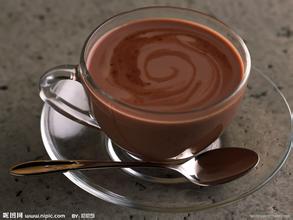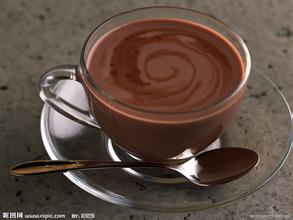Introduction to the characteristics of fine coffee beans in the manor area of small-grain iron pickup coffee made in Yunnan, China
Panama is located on the Panamanian isthmus in Central America, bounded by Colombia to the east and the Pacific Ocean to the south.
Map of Panama
Map of Panama
It is bordered by Costa Rica to the west and the Caribbean to the north. The territory is S-shaped to connect North and South America, and the Panama Canal connects the Atlantic and Pacific oceans from north to south. It is known as the "bridge of the world". [5] Panama has a land area of 75517 square kilometers, a land length of 772km and a width of between 60km and 177km. The coastline is 2988 kilometers long and the land boundary is 555 kilometers long. In longitude and latitude, Panama is located between 7 °N and 10 °N, and between 77 °and 83 °W. The national emblem of Panama was launched in 1904. The national emblem is a brown eagle with its head held high.
Panamanian national emblem
Panamanian national emblem
It stands on the national emblem with a white ribbon with the Panamanian motto "for the benefit of the world". In the middle of the national emblem is the brown isthmus of Panama, the blue Pacific and Caribbean seas, and the Panama Canal that connects them; under the blue sky, a bright moon has risen, the corresponding sunset is still shining in all directions, symbolizing the arrival of Panama's independence "at sunset and moonrise"; the silver sword and rifle crossed on the upper left have experienced the ups and downs of hundreds of years of war on Panamanian land.
In 1931, it was exported to Kenya in obscurity from Geisha Mountain Mountain in southwestern Ethiopia, wandered to Tanzania and Costa Rica, was transplanted to Panama in the 1960s, and then went through nearly half a century before it became a blockbuster, beating the victorious armies of Bourbon, Kaddura, Kaduai and Tibika to win the first prize of the Panamanian National Treasure Bean Cup Test Competition in 2005, 2006 and 2007. In 2007, the International famous Bean Cup Test sponsored by the American Fine Coffee Association (SCAA) won the championship again, and the bidding price was sold at US $130 per pound, setting a record for the highest price in the history of competition beans. It is reported that the later Panamanian national treasure bean competition will be divided into two groups: Rose Summer and non-Rose Summer, so as not to be robbed of the brilliance of other varieties by Rose Summer. Rose Xia is a member of the Tibika family, but it became famous more than 70 years after leaving Ethiopia, and fulfilled the saying that Ethiopia is a treasure trove of Arabica genes. it is enough to make waves in the coffee market Panamanian coffee is famous for the magnificent summer of the Jade Manor, and the producing area where the Jade Manor is located is also quite famous. It is located in the Boquete producing area of Chiriqui province. Boquete is a town of Chiriqui in the province of Ricki, located near the border between Panama and Costa Rica, close to the famous Baru Baru volcano, with rich and fertile soil, climate and soil that are suitable for producing quality coffee.
In the Pokuit producing area, there are also many excellent manors, except the famous Emerald Manor, Alida Manor, Aqaba Manor and so on, all of which produce high-quality boutique coffee. This is not only due to the superior ecological conditions of the Pokuit region of Panama and the fertile volcanic ash soil of the Baru volcanic land. Another important factor is that the microclimate in the Poquet Heights of Panama is a unique and important resource for boutique coffee in the Pokuit region. This is the Panamanian environment from east to west that allows cold air to converge above 6500 feet through the Central Mountains, thus creating a variety of microclimates in the Pokuit region, making its temperature and rainfall very suitable for plant growth. so the coffee trees grown here grow very well.
In Poquet's unique planting environment, there is naturally not only the rose summer of emerald, the king of coffee, regardless of flavor, quality and value, but I think it is quite extravagant to drink rose summer every day, and even if there is no economic pressure, it is not like eating shark's fin and bear's paw every day. The same is true of coffee. Only by dabbling in a wide range of subjects can you enjoy the pleasure of tasting coffee more.

Important Notice :
前街咖啡 FrontStreet Coffee has moved to new addredd:
FrontStreet Coffee Address: 315,Donghua East Road,GuangZhou
Tel:020 38364473
- Prev

Introduction of Coffee Variety Flavor and Taste Manor in Xidamo Chiso area of Ethiopia
In December 1994, the Constitution of the Federal Democratic Republic of Ethiopia was formulated. According to the Constitution, Ethiopia will implement a federal system and a parliamentary cabinet system after the general election for a term of five years. After the national election in May 1995, the Federal Democratic Republic of Ethiopia was established on August 22, and Meles became prime minister in her capacity as chairman of the majority party of the people's House of Representatives. On May 14, 2000, Ethiopia held a national meeting
- Next

Pure Jamaican Coffee Flavor and Taste introduction to Fine Coffee in Manor area
Columbus came to Jamaica in 1494, and in 1509 Spain declared Jamaica its colony and renamed it Santiago. Spain's slave policy towards the indigenous peoples led to the extinction of the Arawaks on the island as a result of war, disease and enslavement. In order to supplement Jamaica's labor force, Spain began to sell slaves from Africa to Jamaica since 1517, resulting in
Related
- Detailed explanation of Jadeite planting Land in Panamanian Jadeite Manor introduction to the grading system of Jadeite competitive bidding, Red bid, Green bid and Rose Summer
- Story of Coffee planting in Brenka region of Costa Rica Stonehenge Manor anaerobic heavy honey treatment of flavor mouth
- What's on the barrel of Blue Mountain Coffee beans?
- Can American coffee also pull flowers? How to use hot American style to pull out a good-looking pattern?
- Can you make a cold extract with coffee beans? What is the right proportion for cold-extracted coffee formula?
- Indonesian PWN Gold Mandrine Coffee Origin Features Flavor How to Chong? Mandolin coffee is American.
- A brief introduction to the flavor characteristics of Brazilian yellow bourbon coffee beans
- What is the effect of different water quality on the flavor of cold-extracted coffee? What kind of water is best for brewing coffee?
- Why do you think of Rose Summer whenever you mention Panamanian coffee?
- Introduction to the characteristics of authentic blue mountain coffee bean producing areas? What is the CIB Coffee Authority in Jamaica?

